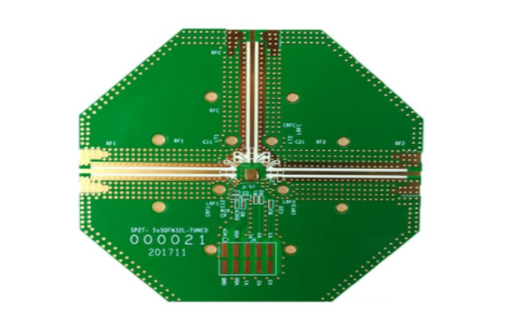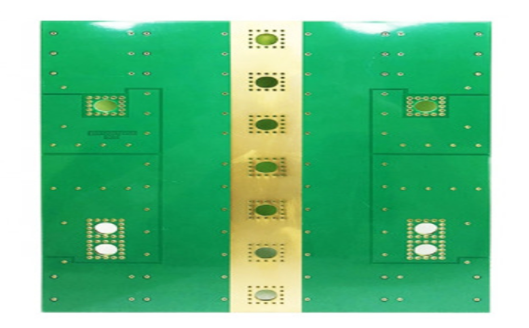High-frequency electronic devices are the trend today, especially in wireless networks. Satellite communications are developing rapidly, and information products are moving toward high speed and high frequency. Therefore, the development of new products always requires the use of high-frequency substrates, satellite systems, cell phone receiving base stations, etc. These communication products must use high-frequency PCB.
The high-frequency performance of the device depends largely on the electrical characteristics of the PCB used to mount and connect its circuit components. the degree of influence of the PCB design increases exponentially with the operating frequency.
The laminates used to make high frequency boards have specific properties such as dielectric constant (Dk), loss angle tangent (εr) and coefficient of thermal expansion (CTE). High frequency laminates use more advanced composites than standard FR-4 materials.
Dk stability - may fluctuate with frequency.
Loss factor - based on surface contaminants and moisture absorption of the laminate.
Ability to withstand manufacturing temperatures - Lead-free manufacturing temperatures are higher than standard soldering temperatures.
Heat transfer - even low power, high frequency PCBs generate heat.

High-frequency PCBs have a wide range of properties. Understanding these properties will help you understand these PCBs. These PCBs are called high frequency boards because of the characteristics they offer. Let's take a look at the properties of these PCBs.
The dissipation factor of frequency PCBs is low, between 0.0019 and 0.025. This value helps ensure that the signal transmission rate is not affected. A low dissipation factor also improves signal transmission. A low dissipation factor helps to minimize signal loss.
High frequency PCBs have a low and stable dielectric constant. This helps to ensure frequency transmission. This also ensures less signal delay. The lower dielectric constant leads to higher frequency transmission rates.
High frequency PCBs are resistant to chemicals. These boards can withstand chemical attack when exposed to them. Due to this property, these boards are less likely to corrode.
The water absorption of these PCBs is low. It does not absorb water and can therefore withstand humid environments.
Frequency PCBs have low dimensional stability. These PCBs maintain their dimensions regardless of the temperature to which they are exposed. Even when they are exposed to high temperatures, they remain constant in size.

High frequency PCBs are used in a variety of applications. These boards are manufactured specifically to meet the requirements of high temperature applications. They are used in the following applications.
Advanced communication systems: these boards are used in communication systems. They are typically used for filtering equipment, amplifiers, booster stations, and receivers.
Military: High frequency PCB materials are used in the production of ammunition and firearms.
Radar systems: These PCBs play a vital role, especially in the marine and aviation industries. Radar systems prevent ships from encountering obstacles such as icebergs in marine applications. Radar systems guide aircraft, thus preventing accidents.
Medical systems: These boards are used in the manufacture of medical electronics, such as monitoring and diagnostic equipment.
High-frequency PCBs have excellent characteristics that make them suitable for different applications. They meet the needs of high frequency and high performance applications. These boards are popular in the electronics industry. Creating PCB designs that follow international standards will ensure that your high frequency circuits function well, even under adverse conditions. TOPFAST is a leading PCB manufacturer offering high quality PCB products and services, if you need custom high frequency PCBs, feel free to contact us for cooperation.
Address of Plant
PCB Factory:
A1 Building, B Zone, Ditang Industrial Zone, Ditang Road, Shajing Street, Bao'an District, Shenzhen, China
PCBA Factory:
4/F, Building 21, No. 46 Xinye Road, Yonghe Development Zone, Huangpu District, Guangzhou, China
Office Address:
Room 2201-03 & 2206, Building 1, Changfeng International, No. 96, Li Xin 12 Road, Zengcheng District, Guangzhou City, Guangdong Province, China.